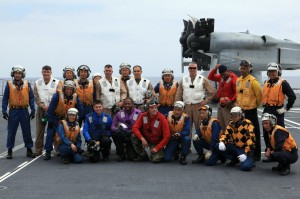2013-09-11 The second edition of Three Dimensional Warriors focuses on the evolution of USMC aviation and the changing combat approaches, which empower the force.
The USMC is at the forefront in shaping a distributed operations approach for the American military, an approach that is critical for such strategic shifts as the “pivot to the Pacific.”
Based on original interviews with the Marines and other services, the roll out of the F-35, the combat experience of the Osprey, the building of the new amphibious ships, the new role for the Miitary Sealift Command are all highlighted.
Original interviews with senior military officers in the Pacific, the 7th USAF, the senior USMC (MARFORPAC), the head of 1st Marine Air Wing, and others provide unparalled insights into the USMC and USN’s approach to the future.
The USMC is rolling out 21st century systems to shape a new approach to air assault and the insertion of forces.
The F-35 and Osprey are not 20th century systems, so in order to understand the evolution of military technology and approaches, analysts, journalists and students should read this important new book.

Part One provides an introduction and overview of the evolution of the USMC “Three Dimensional Warriors ” including their operational experience with the Osprey. More important, we look at how USMC operations have changed, and the impact of the F-35 on the future of power projection — and the USMC role within that future.
Part Two addresses selected operational dynamics where change is evident, such as the evolution of the seabase as seen in Bold Alligator 2012 and Libya, and planning for the pivot to the Pacific.
Part Three covers aspects of preparing for the future. The focus is on three key elements of shaping capability, specifically the work of the USMC at Yuma Air Station, the joint training facility for the F-35 at Eglin and the emergence of the new aviation-centric large deck amphibious ship, the USS America.
The final section looks at the emerging capabilities, covering the impact of the USS America on the expeditionary strike group and the impact of the USMC’s F-35 flown by the USMC within an overall context of U.S. joint and allied capabilities. We conclude by examining the nature of a new combat learning process associated with evolving three-dimensional combat capabilities.
The book is available in paperback and can be purchased here:
https://sldinfo.com/defense-security-publications/
The book can be purchased in an e-book format as well and is found on several e-book sites, including:
http://www.amazon.com/Three-Dimensional-Warriors-Edition-ebook/dp/B00E3ZX7IA
http://www.scribd.com/doc/155441562/Three-Dimensional-Warriors-Second-Edition

